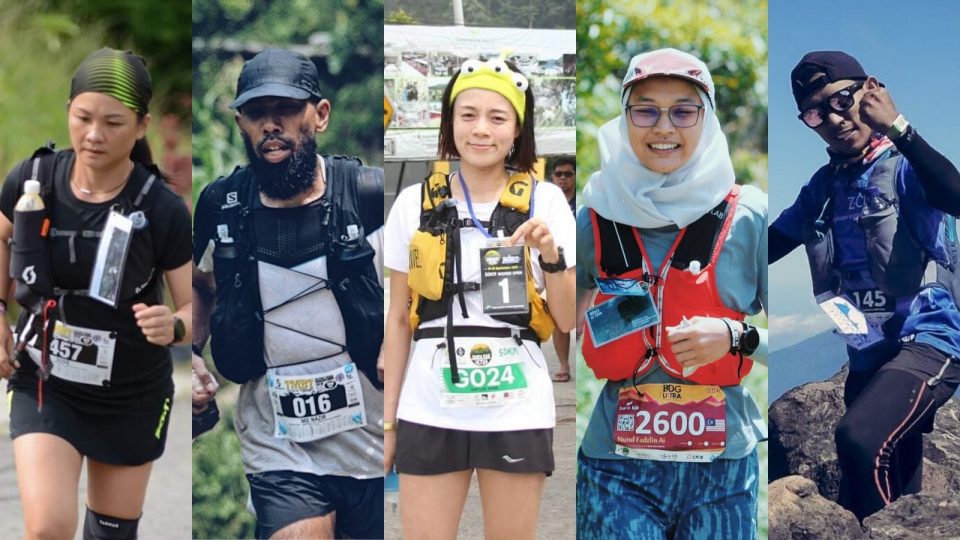Do you ever think that trail running is a dirty sport? Have you ever tried running off road?
Trail running is a sport-activity which combines running and hiking, that is run on any unpaved surface such as mud, sand, dirt, grass, gravel, roots and rock slabs.
Trail running is similar to mountain and hill running.
For all sports, we should understand the fundamental and training techniques so we can enjoy it with no hiccups.
Today, we got you cover with valuable tips and knowledge about ultra trail and trail running tips from some of the top trail runners in Malaysia.
It’s not surprising that trail running is gaining fast popularity in the last couple of years as Malaysia have an abundance of beautiful running trails and nature hiking places all around the country.
Let’s find out more about trail running.
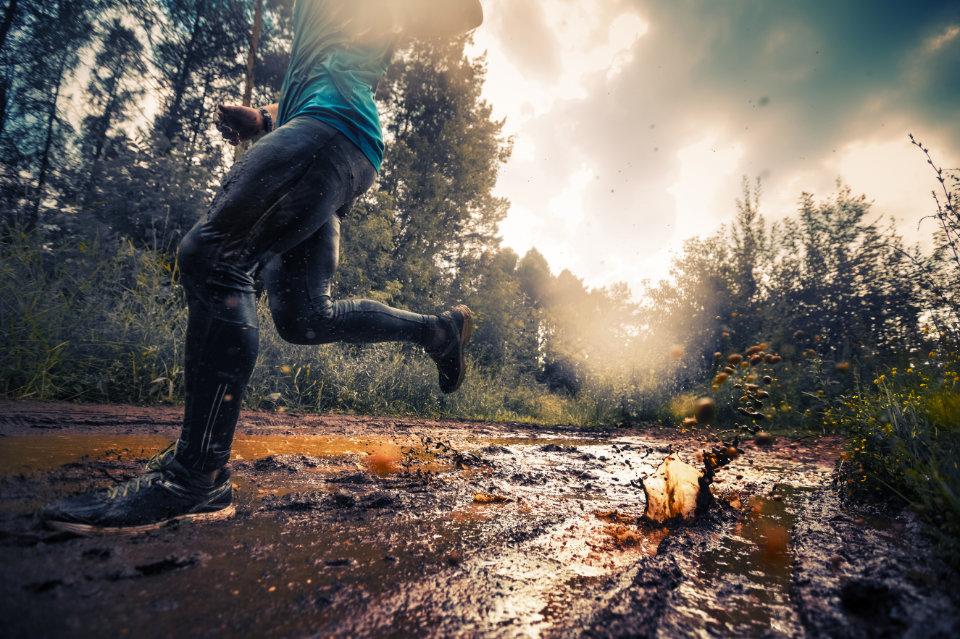
What is trail running?
Trail running is a sport-activity of a combination of running and hiking. Trail runners normally run on any unpaved surface during their training or races usually over long distances which make them into ultra trail runners too.
Trail running take place in different places, weather and tracks. Trail-running is a pedestrian race open to all, in a natural environment such as mountain, desert, forest, and plain with minimal possible paved or asphalt road.
The running terrain can vary from dirt road, forest trail or single track. Trail running can be described as a sport that consists of long distance running and hiking over trails. But trail running is not only about running, but also about experiencing different environments.
How to plan and prepare for a trail run?
Well, you must be asking, “Can we use the same marathon training plan for road marathon?” Yes, you can. But it is crucial to include running on trails for at least once a week.
What are the benefits of trail running
Trail running is considered a “green” outdoor sport as you will head out to the nature to admire the trees, plants, flowers and animals.
Beside all the benefits of running, trail running can also provide the following health benefits:
- Improve your mental health.
- Strengthen the legs to a greater degree than road running.
- Improve coordination, agility and balance more so than running on roads.
- Reduce tension, anger and depression.
- Make you more creative.
- Increase your lung intake capacity.
Trail running plan for beginners
Although road running is similar to trail running, there is still a difference between road running and trail running.
So, if you are a beginner and you want to start to train for trail running. We are providing you a simple and basic plan to start your trail running journey.
If you are an experienced runner and want to try out trail running, this would be a guide and a basic knowledge on how to train for a trail run.
Step one: Find the right trail running shoes
The main show to start a trail running will be the shoes. You must find a right shoe to encounter those rocks, slippery roots and stubborn mud during trail running. Usually, trail shoes are chunkier than road running and emphasise on foot protection, durability, and stability.
You can also choose between stripped-down minimalist shoes that give you an elevated trail feeling and your own biomechanics or maximalist shoes that have a lot of cushioning to minimise joint stress and discomfort on high-mile days.
Step two: Gear
If you are going for a quick trail run, you do not have to bring a bunch of stuff for it. It can be as simple as pulling on a pair of shorts and a T-shirt, lacing up a pair of running shoes and heading out the door.
Unless, you are going to a trail race, it will be different. You will need to bring a few things during the race. Of course, you will bring the necessities for the trail run that make your run more enjoyable and comfortable.
Water
Water is a must during your run, no matter how long or short it is. You will have different options to carry your water, such as hydration packs, hydration vests, handheld water bottles or waist packs with water bottles.
If you’re going for a short run, you’re probably going to be fine with a portable water bottle or a lightweight waist pack. You’ll be able to carry enough water for a walk, and you’ll also have room to store your house key, money, and an energy bar or gel.
Consider a bigger waist pack, a running hydration vest or a running hydration pack for longer runs. They provide more capacity for larger amounts of water, extra clothing, food, first aid supplies, navigation tools and other things that you may need on a half-day or full-day trip.
If you choose a hydration pack, aim for a running-specific style with a narrow design that helps you to swing your arms easily.
Clothing
You should wear moisture-wicking merino wool or synthetics rather than cotton as you do not want your shirt to stick to your skin. During a long run, it will not be comfortable. For cool or wet weather, a lightweight rain shell or windbreaker is advisable.
Dressing in layers is a smart approach, particularly for long runs. If your body is warm up during your run, you can take off one layer, when is cool off during the break, you can pull them back.
Remember to wear a breathable clothing. Trail running generates a lot of heat and sweat, so avoid clothing that builds an impenetrable barrier. Lightweight knit fabrics fit great, and zippered collar tops give you a way to vent.
Although most rain jackets are breathable, they can still get damp and clammy inside when you’re working hard in your run. Unless, it rains you are likely to be more comfortable wearing quick-dry, breathable synthetic or wool fabrics or a soft-shell jacket than a fully waterproof one.
Food
You may not need more than one energy gel or two to run for less than an hour, but if you’re out for a couple hours or longer, you’ll want to have a variety of energy products such as chips, gels and chews.
Finding the right food for your tummy during a run, it takes time to experiment it. Typically, for quick, high-intensity workouts, you’re going to want to stick to easy fuel products like gels and chews.
But if you get into running long distance, such as ultramarathons, you may find that heartier snack like bars, nuts, peanut butter and jelly sandwiches, and other “real” foods are ok, because you’re often going at a slower pace than usual.
Watch
There are many choices between watches, from simple sports watches to tell time and include a stopwatch to activity trackers that track your progress to high-end GPS watches that track distance and speed and can be used to help navigate.
Some of these tools include a heart rate monitor that can help you improve the efficiency of your exercise.
Lights
If you are going for a night trail run, it is a must to wear a headlamp. Many mountain runners like to use a portable torch, in addition to a headlamp, to really light up the night and be able to look around while holding the spotlight on the trail.
Choosing a headlamp that helps you to change the shape of the beam, it can be useful. You can set the beam to a wide flood setting for better peripheral lighting and switch it to a spot setting when you need to see further down the trail.
Sun Protection
Sun protection is an essential part also as it can help you to prevent skin damage. Sun protection may include a combination of sunscreen (SPF 30 or higher is recommended), lip balm, hat and sunscreen clothes. Keep in mind that fair-skinned people can get skin damage in as little as 15 minutes of midday sunlight.
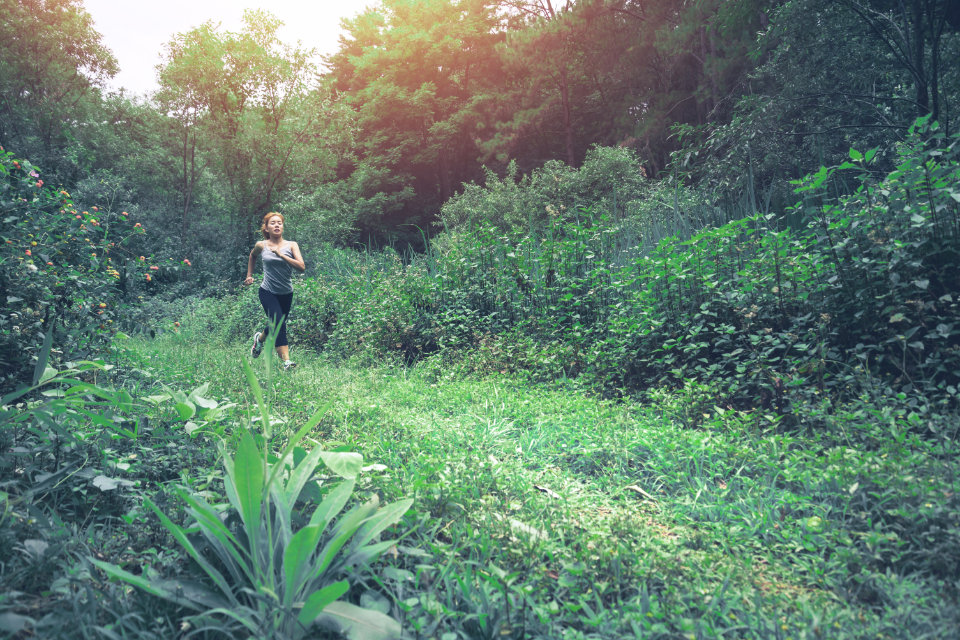
Step three: Where to go for trail run?
For beginners, do remember that trail running typically takes longer than road running, even though it is at a similar distance.
The rough terrain will slow your pace down and require to engage your muscles. So, start slow and don’t rush yourself as well.
- Running clubs: If you do not where to start, you can join a local or community trail-running club. They are excellent at finding new routes or places for trail running.
- Local roads and trails: If you want to explore your trail running yourself. You can find the routes on the local network of gravel roads and dirt trails that many towns and cities have.
Look around your area, such as state parks and city or head out on a quiet gravel road. These low-commitment outings are a great way to get used to the terrain and try out your new gear. - Guidebooks and websites: When you’re ready for more challenge or looking for a further afield than your local trails, guidebooks and online resources are helpful. As now the internet is easy to search and access out and about the things you want or need. The internet will give you all the details you need: trail difficulty, distance, elevation gain, directions, trail features and details such as whether dogs are allowed.
Websites may also include the recent trip reports that may give you a sense of what the trip will be like. So, you can plan it based on the routes you research. Don’t limit yourself to only trail-running specific resources. There are many hiking or backpacking guidebooks and websites offer information that can be useful when planning a trail run.
Step four: Work on trail running techniques
Fartlek: Warm ups are always the most important part of your trail running. Start with warm ups at least 10 minutes. Once you are done with warm up, start with an interval from medium to hard. Between the intervals, jog easy for recovery and continue the same techniques. The remaining distance, you can use it as cool-down.
Hills: Climbing and descending are both crucial skills for trail running. Repetition helps to improve your technique and exercise cadence. This exercise also helps build strength and increase endurance.
Long run: You can run in a relaxed pace, where you can control your breathing and flow. Also, to find a similar terrain that what you expect on the race day.
Tempo: Tempo run is an anaerobic threshold or lactate-threshold run. The pace will be about 25 to 30 miles than your current 5k race pace. It often describes comfortably hard for 20 minutes. Tempo run doesn’t need a tracker or mile markers, but instead it depends on time, making it an ideal workout if you’re traveling or just starting a training program. Since running down the clock can be a lot less intimidating than tackling mile repeats. Tempo run also can improve mental and physical health of a runner.
Cross training: It is great to fit cross training twice a week about 30 to 60 minutes. You can opt for an easy workout like swimming or spinning.
Rest: It is important to take a break. Always listen to your body and avoid overuse injuries.
Inspirational Trail Runners in Malaysia
We are excited to introduce you to 10 amazing trail runners of Malaysia. They will be sharing their experiences and helpful tips and tricks with you.
This article will be a helpful in your first step to be a trail runner.
1. Loo Boon An
Bio: 28 year-old, Business and Clinical Associate
Ex-scout back in secondary school and the second child in his family, Loo actively participated in activities such as camping and hiking. The most memorable outdoor experience Loo had, was hiking at Gunung Nuang at the age of 14, together with other scout members.
Loo believe throughout the 5 years of being a scout, it had built his discipline and interest in exploring Mother Nature.
He has started to run in September 2016, and participated his first 30km trail event at Borneo Ultra Trail Marathon 2017, and subsequently his first 50km trail event at “The Most Beautiful Thing” Ultra Trail Marathon 2017.
Since then, Loo had participated in 25 ultra marathon events. The longest distance he has challenged was 112km in 24 hours.
I believe to be success in any discipline, having the right attitude and persistency is the key to be a successful ultra trail runner.
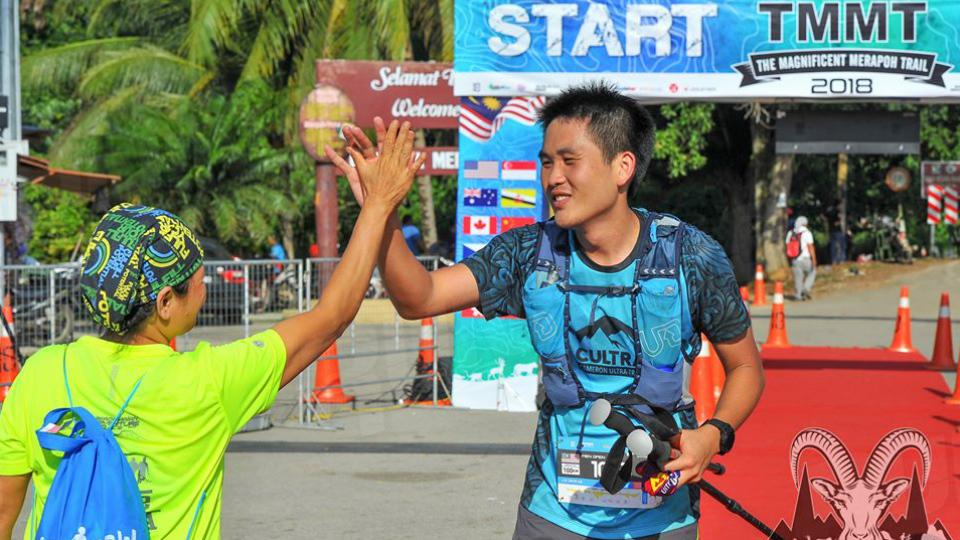
RS: What or who inspired you to try trail running?
Boon An: I was inspired by a rock climber from Hong Kong-Lai Chi Wai. The first Chinese athlete that climbed up lion rock in a wheelchair. I want to challenge myself at a young age, to see how far I can go in ultra trail running.
RS: What is your main motivation for doing athletics as an trail runner?
Boon An: My main motivation is to become one of the 90s to achieve/finish 100 ultra marathon in Malaysia. ( I was at the count of 25 up to date). I hope to influence more 90s or even 00s to join trail running.
RS: Where are your go-to places for trail run training?
Boon An: Sri Bintang Hill at Kepong. It is a basic trail with multi-element, such as gravel, forest trail, stairs that allow me to prepare myself for upcoming races.
RS: How do you plan and train for your ultra trail marathon?
Boon An: To prepare a race, I do segregate my time to different sport, such as swimming, road running, hiking and badminton. In addition, mental preparation and training are important, rather than physical training, therefore I will do the loop running (2-3km a loop) in my daily routine.
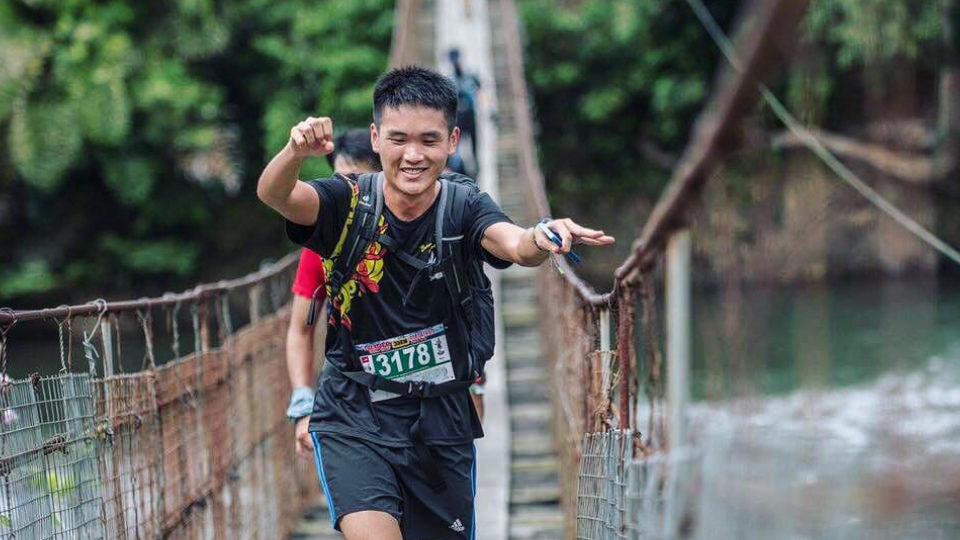
RS: Did you encounter any struggles during your training?
Boon An: I believe everyone do encounter challenges in running, for me, work and life commitment will somehow affect my training schedule for a race, and it’s my current biggest challenge. To overcome this, self-discipline and good planning are important.
RS: What was your most memorable trail race experience throughout your ultra trail journey?
Boon An: My most memorable trail race experience was at Vang Vieng Trail, Laos, 2018. I participated in 52km category. Although it wasn’t my longest challenge distance, it was the most challenging trails that I ever encountered.
RS: What is the key to become a successful trail runner?
Boon An: I believe I’m still green to comment the key to become a successful trail runner. But I believe to be successful in any discipline, having the right attitude and persistency is the key to success.
RS: Do you have any tips and tricks to get better in trail running?
Boon An: Find a trail with mild elevation gain and short distance (3-5km/loop) and loop as much as you can in a single training. If possible, do it at noon during the weekend. It gives you heat and mental training, which prep you for a long distance race. Most importantly, always listen to your body and do not over train, be optimistic.
You can follow Boon An on Instagram: @loo_boon_an
2. Nurul Fadzlin Amirah Bt Mohamad Fauzi
Bio: 28 year-old, Aircraft Maintenance Technician
Fadzlin is a woman who was born in Terengganu, Malaysia and currently working in the aviation field doing aircraft maintenance with AirAsia Berhad for 5 years. She has a strong love relationship with running as it helps to empower and shape my present self towards a beautiful future.
Having a sprinter background and topped the podium for her category during her heydays back in school makes her wanting to keep continue her running journey until today.
The Best word to describe Fadzlin is “sedulous” as she do not simply give up until she give her best and try to the fullest.
Training and running an ultra trail has taught me more about myself than any other endeavour I had participated in.
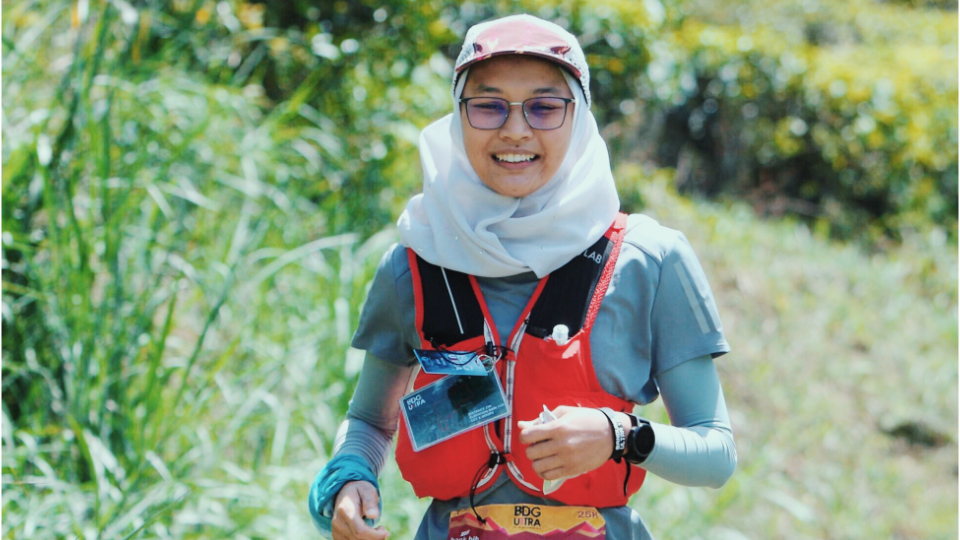
RS: How do you start trail running?
Fadzlin Amirah: Hitting the trail with my own two feet and explore beautiful places in different regions. Running itself is hard and gruelling. But ultra trail running is also challenging and gruelling in a wonderful way. I just love the challenge that an ultra trail running offers me is differ from road running.
RS: What is your main motivation behind trail running?
Fadzlin Amirah: The main motivation is to embrace personal achievement. Training and running an ultra trail has taught me more about myself than any other endeavour I had participated in, and it had given me a strong passion and confidence in life. For me, the mental and physical hardship really worth the trouble. I feel content and proud with what I had achieved, the greater the adversity, the greater the reward.
RS: Where are your go-to places for ultra trail training?
Fadzlin Amirah: I have four go-to places that have been my favourite places for training ground, which are Kiara Hill, Ketumbar Hill, Gunung Datuk, and also Kemensah. Each of the places has their own specialities that vary in terms of terrain and altitude. Those places are complete with mud, gravel, and steep uphill and downhill terrain that could help me to train my legs to the rigour of the trail.
RS: How do you plan and train for your ultra trail marathon?
Fadzlin Amirah: I am quite flexible when it comes to training. Most of the time, I just listen to my body and relying on the fact that how I feel on that day. If the body gives me pretty good signs, then I will lace up my shoes and go with it. I just try to keep getting good solid miles and figuring out on how to do it better by times.
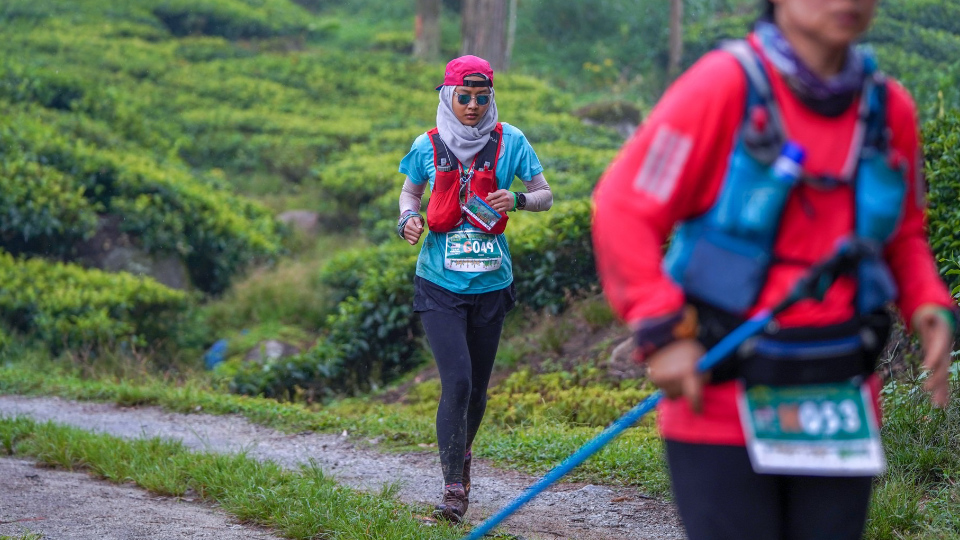
RS: Do you encounter any struggles during your training? If you do, how do you overcome it?
Fadzlin Amirah: Yes, I did. Sometimes is an arduous task to train for my ultra marathon. High mileage of training gruelling the trails can drain the vital nutrients from my body faster than usual. This will result to fatigue. I overcame this problem by prioritising my nutrition management, which I eat a lot of vegetable and fruits and also protein requirement per day.
RS: What was your most memorable trail race experience throughout your trail running journey?
Fadzlin Amirah: My most memorable trail race was during Bandung Ultra 2019. I learnt how to race by feel. It really did bring a tremendous impact on all of my other races, after that it taught me to run from within and through any racing condition and cross the finish line at my strongest.
RS: What is the key to become a successful trail runner?
Fadzlin Amirah: In my belief, there are few keys in order to become a successful runner:
- Be consistent in training.
- Do not rush into things or you might get injured.
- Learn from the best.
- The mind need to be strengthen because the intensity of this ultra race is going to take days.
- Of course, you must have a proper trail attire.
RS: Do you have some tips and tricks to improve in trail running?
Fadzlin Amirah: The tips are:
- Better do most of the training on trails that closely resembles the actual course. It would be even better if I can go and see the course.
- Train the strength with some home-based explosive training. Doing cross training would help a lot to strengthen the muscles.
- Manage the fear. Don’t be afraid of falling during downhill. Basically, you can build the confidence through practices.
You can follow Fadzlin on Instagram: @nfadzlinmf
3. Susie Lai
Bio: 37 year-old, Teacher
Susie is a single mother with a daughter. She holds a degree in education and teaches Mathematics in primary school. The eldest of four siblings in the household, Susie is not a runner or an athlete in high school. She just participated in some of the events, because of its compulsory for everyone.
She did present her college in relay and Walkathon before. After graduation and started working, Susie rarely exercise, perhaps only once a year by playing volleyball or Futsal representing her district education department.
Before Susie starts to involve in trail running, she spent a lot of her free time at home cooking, baking or sewing and sometimes she spent her weekend with her daughter and friends. But, now she barely has the time to do so, because most of her weekend, she fully utilises them for her trail run training.
Susie’s running journey starts when she can’t fit in the beautiful dress. Her clothing size keeps on increasing. That’s when she realised she need to do something to lose some weight and get a healthy lifestyle. Running has taught her that she is capable of so much more than she ever imagined.
Her aims is to complete her last race, which is a Malaysia Mountain Trail Festival (MMTF) on 14 Dec 2019 in Taiping, Perak to entitle her a one-star Grand Master in Asian Trail Master.
“Don’t ever doubt your ability, just do it and never give up, because the moment when you want to quit is the moment when you need to keep pushing #sufferbutneversurrender.”
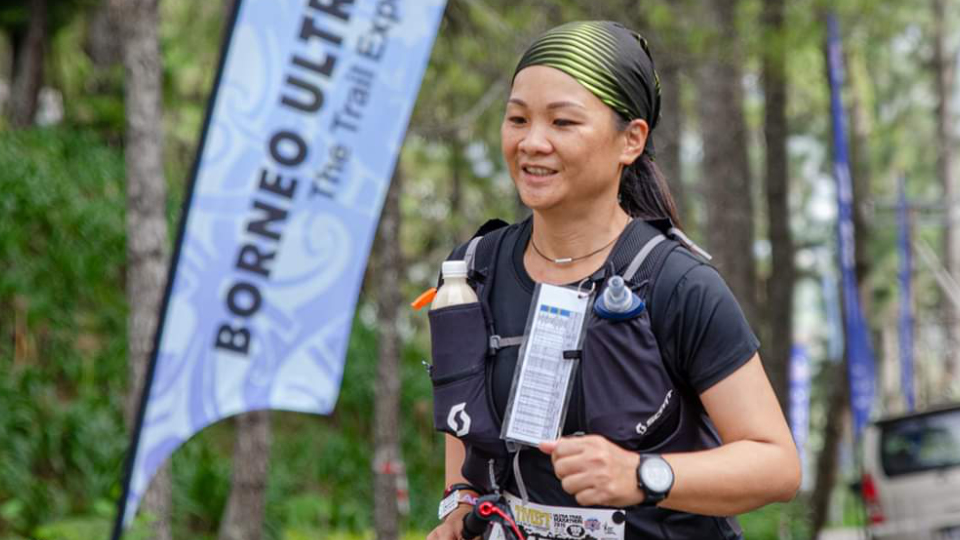
RS: Why did you start trail running?
Susie: To challenge my body and sanity limit. The satisfaction after completing an ultra trail event and unlock every new distances make me more confident that I can do better and never underestimate my own limit in doing anything. If there is a will there’s a way. Ultra trail running is one of the fantastic things that don’t see age, gender, race or disability. It just sees ability. Not all athletes who take on these incredible journeys are professionals or elites. In fact, the majority are ordinary people who are motivated by a spirit of adventure and driven by determination.
RS: What is your main motivation behind trail running?
Susie: The challenges of the ultra trail itself motivate me to be a part of it. One of the many things I love about trail running is that every trail has its own unique scenery, terrain and challenge. To challenge my own limit and get healthier life. Trail running is a refreshing way to get outdoors and explore the beautiful scenery of nature. Being on the trail, I feel more relax and stress freer than road running. I learned to be strong and always stay positive even in the hardest situation.
RS: Where are your go-to places for trail run training?
Susie: Kubah National Park, where is the Mount Serapi and Selang/Rayu Trail located 15 minutes away from my home and safe. Here I got everything I need for my trail training – tarmac road hike and descending to the peak of Mount Serapi, Selang / Rayu Trail, where I can enjoy the fresh air and beautiful scenery of the nature. An escape to the waterfall trail to enjoy the cool shower after the training.
RS: How do you plan and train for your ultra trail marathon?
Susie Lai: I signed up for an event to motivate myself to train harder and give myself a sufficient time to prepare for it. This is my weekly training :-
- Monday – Rest day
- Tuesday – Recovery run 10km
- Wednesday – Heart break hills (HBH) 8-10 km
- Thursday – Interval run 10km
- Friday – Rest
- Saturday – Long slow distances (LSD) 21km and above
- Sunday – Hiking and trail running
I will do back-to-back long runs once on every weekend, which is on Saturday, and Sunday will be my hiking and trail day, which takes around 3 hours and above.
Sometimes, I include road running and heat training after the hike and trail, which took around 2 hours from Matang Wildlife National Park to Kubah National Park for 13km.
I take proper food and nutrition all the time before, during or after the event, to make sure I have enough energy to finish my race and recover faster to prepare myself for the next event.
I also do wear comfortable attire and suitable shoes for the trail. The most important part for me before an event is to get enough rest and sleep.
RS: Do you encounter any struggles during your training?
Susie: Thank God, so far I didn’t counter any struggles during my training.
RS: What was your most memorable trail race experience throughout your trail running journey?
Susie: The list of ultra trail I have joined :
I’m a novice in this field, my journey through ultra trail running just started a year ago. The most memorable trail race experience throughout my ultra trail journey was my 2nd attempt in Tailwind Penang Eco 100 (100km) this year. This is my favourite trail event because this trail has its own unique scenery, terrain and challenge. I have less preparation for this event due to minor injury from previous events, but I aim to do my personal best for this time.
For the 1st half (50km) of the journey I did a bit better than last year, despite of the unpredictable weather flag off in hot, humid and a bit, drizzle halfway I managed to complete it within 8 hrs, 30 minutes earlier than less year because the route for the 1st half is a bit flat and less elevation.
Based on the timing, I could reach the finishing line within 24 hours, but things don’t work as planned when I started to have difficulty in running or walk downhill because both of my knees feel painful and can’t bend my legs. But I stay positive and keep on motivating myself that I can finish the race as long as I keep on moving because I still have plenty of buffer time to reach each checkpoint.
Luckily, I reached CP7 (69.8km) just right before the heavy downpour and thunderstorm early in the morning, so I decided to take a rest and wait until the rain stop. 30 minutes pass by the rain doesn’t seem like to stop so I decide to continue my journey in the heavy rain because of my current condition I afraid that I might not make it to the finishing line if I keep on waiting for the rain to stop. I took around 13 hours for the last 30km with my painful knee, blister and chafing everywhere.
Nearly lost at CP 11 due to the poor marking, luckily is not too far and managed to track back to the right direction. Last CP, totally bonked but I managed to force myself to keep moving until the finishing line. The struggle is real when you encounter an expected situation in a race, but keep calm and motivated yourself that you can do it and never ever give up – suffer but never surrender.
Whatever it is, I’m truly blessed and thankful that I able to complete the race within the cut off the time, despite of the difficulties I have throughout the whole event. Lesson learned to be very prepared physically and mentally for the next event.
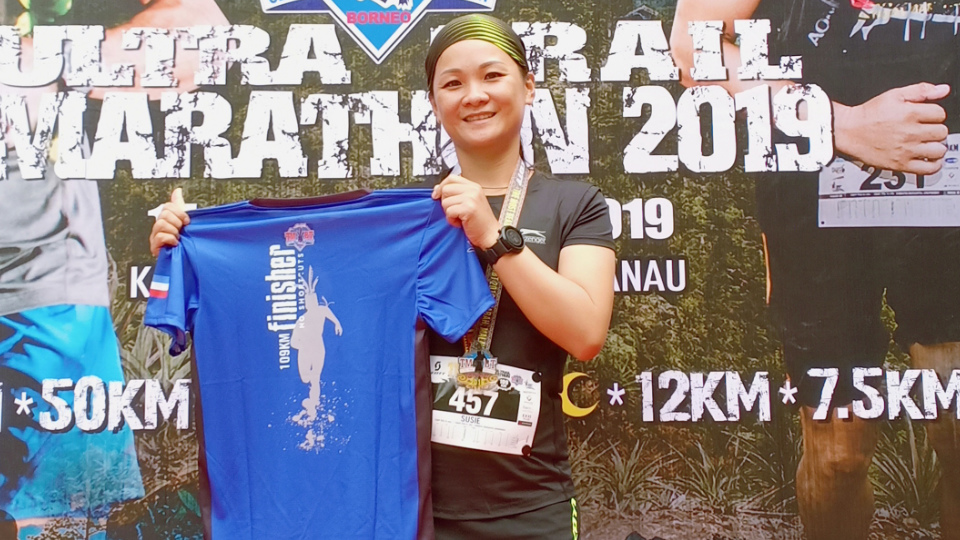
RS: What is the key to become a successful ultra trail runner?
Susie: Preparation is the key of success in an ultra trail running. Besides, running and training ultra preparation involves studying the course, knowing what conditions to expect, dialling gear, testing hydration and fuelling strategies. Practice it during training and stay on top of it while racing. Include heat training and hill running for a course with significant elevation changes. Keep moving unless you need to take a break. Don’t think about the distance, constant forward motion gets you to the finish line.
Keep a positive attitude and enjoy the journey towards the entire race. As for me, I always keep my running club motto as my motivation “Suffer but never surrender” – Underground Runners. It kept me going strong, even how hard and painful the situation is. There is nothing easy about an ultra. Accepting that before you get to the starting line means you won’t be surprised when things become difficult. Pain management, sleep deprivation and low points are all part of it.
RS: What are your tips and tricks to improve in trail running?
Susie Lai: Spend more time working on your weaknesses, whether it’s speed, trails uphill and downhill. Whatever it is spending more time doing it rather than avoiding it. Hill repeats Heart Break Hills (HBH) and hiking are an effective way of boosting uphill and downhill skill. Endurance training is a must for me.
Doing an LSD (long slow distance) run / long run at least once a week. Cross training with hiking and trail running the day after. This is the way how I improve my endurance and determination towards ultra trails running. Step outside your comfort zone and choose some races that tackle more mileage than you’ve ever run before.
As your long runs become even longer, you’ll surprise yourself with what you’re capable of. Listen to your body, don’t be worried about taking a few days off if you are feeling run down. We improve through recovery and if you aren’t recovering, then all you are doing is breaking down.
You can follow Susie on Instagram: @suemarcel
4. Muhammad Nazir Fadzil aka Boojae Fadzil
Bio: 37 year-old, Self-Employed Dance Choreographer and Creative Director / Captain Salomon Malaysia Pacer
Muhammad Nazir Fadzil started running in 2014 and he had been into trail running since year 2015. Muhammad Nazir Fadzil is an endurance junkie and self-trained Weekender athlete.
A full time self-employed as a dancer and choreographer since 1999. He has done sports socially since school and currently keeping up with ultra trail running as main sports. Muhammad Nazir Fadzil is also a world traveller and bike-packing addict.
Stay low-key and humble. Respect the sports. Be patience. You do you. Eventually, you’ll get there.
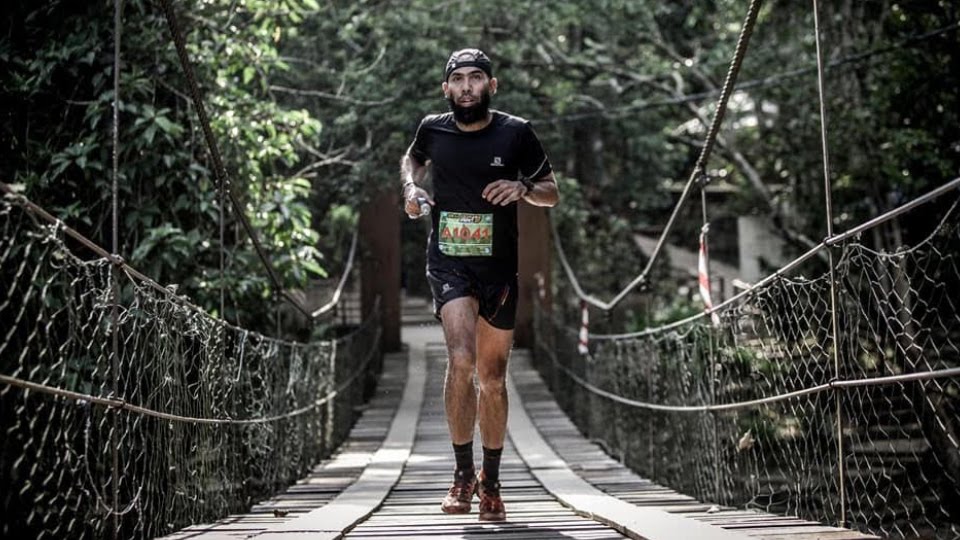
RS: What inspired you to do ultra trail running?
Boojae Fadzil: There’s nothing specific about what that inspired me to do ultra trail running basically. It all started with myself, who just wanted to start running and I get to know that my friend is doing trail running. That triggers me a lot to join the wagon.
From there, I start to run with Trail Blazerz community peeps, who occasionally doing trail and night trail run. I get a lot of information regarding to ultra distance running. Sounds crazy at first, but when you in the right circle of this crazy heads endurance junkie, the craziness suddenly make sense.
RS: What is your main motivation for doing athletics as an ultra trail runner?
Boojae Fadzil: It’s all about to being the best of yourself. I started running as noble as it can be which I never expect that I will receive a medal when I finish a race and not even know all the running terms at all.
Till today, I still don’t understand the deal of being on the podium. It is definitely a great moment when you are at it, but still, it’s not my main motivation at all. Ultra Running is about finding, learning, understand and overcome yourself to achieve something the unexpected of yourself.
RS: Where are your go-to places for ultra trail training?
Boojae Fadzil: My training yard is simple. Bukit Kiara, Bukit Gasing and KDCF would be my favourite and enough for me. The community is welcomed by people who love the trails. We can see all kinds of generations from senior citizen to young kids enjoying it. Love the connection with everyone on the trails by saying simple “Good Morning” and smile, that is the real motivation for me. Also, Bukit Dinding is loveable too, because it has good elevation and I can run from home straight up!
RS: How do you plan and train for your ultra trail marathon?
Boojae Fadzil: I make my training plan as a habit, not a plan. So, I will moderate my running based on my condition, comfort and availability of my time. I used marathon training as a guide to easily run, interval training, tempo, hill training and long run. Also, with resistance strength training, for 3 to 4 times a week. Nutrition training is a must, and I usually practise my nutrition on all my session especially in the long run.
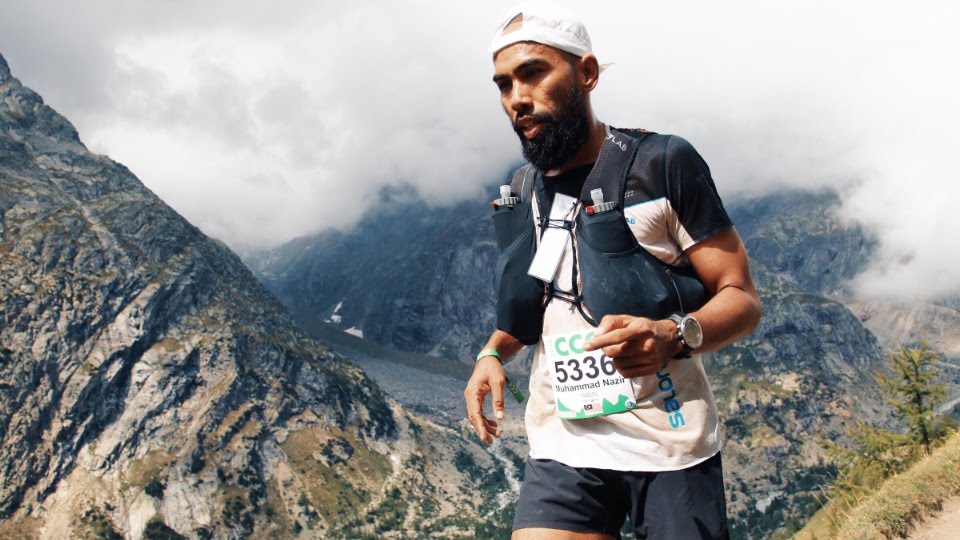
RS: Did you encounter any struggles during your training?
Boojae Fadzil: I used to feel the struggle, because I took my running too seriously until it feels like a must for me. So, I turn my running into a lifestyle, so I won’t feel burdened with so called ‘training’. Even when I’m injured, I enjoy the recovery process and grateful with the journey. Now, I don’t feel struggle anymore, even though I’m not running.
RS: Which was your most memorable trail race?
Boojae Fadzil: I ran CCC at UTMB,101KM 6800m+/- elev. in Chamonix, France in the year of 2018. It’s definitely the highlight of my ultra running race experience. But, it is way far to compare with one of my memorable experiences.
Begin with a group of crazy friends, who attempted an ULTRA-distance running with self-support (some of them are first timer, including myself), running from Petronas Ampang Jaya to Hulu Langat to Pangsun to Gunung Nuang to Janda Baik. Covered about 50KM, with lots of stories throughout the journey and support from friends and families.
They even make a laminated paper medal for us. We called ourselves as ‘Transnasional V1 Finisher’. The journey and experience are priceless. Once a wise man said: “The distance is irrelevant, but the company is” – Idzam Othman.
RS: What is the key to become a successful ultra trail runner?
Boojae Fadzil: Always be consistent. Stay low-key and humble. Respect the sports. Be patience. Don’t worry much about others who are better or stronger than you. You, do you. You’ll get there.
RS: Do you have any tips and tricks to improve in ultra trail running?
Boojae Fadzil: Increase the distance, elevation and difficulties bit by bit. Learned from the experience on how to tackle technical terrain, unexpected weather condition, nutrition wise, suitable gear and etc.
Be friendly and surround yourself with positivity. When you are mentally strong and healthy, it will definitely strengthen your physical as well. Lastly, enjoy the journey of yourself.
You can follow Boojae on Instagram: @boojaefadzil
5. Muhamad Amir Muim Bin Mat Isa
Bio: 26 year-old, Lecturer in Culinary
Muhamad Amir Muim Bin Mat Isa is from Selangor and work as a lecturer in culinary at the Silver Spoon International College. He has started road running since 2016 and change his passion to trail run in the year of 2017 due to some injuries during road running. He also does compress hike at mountains in Malaysia
Always be humble and look for knowledge, even when we succeeded.
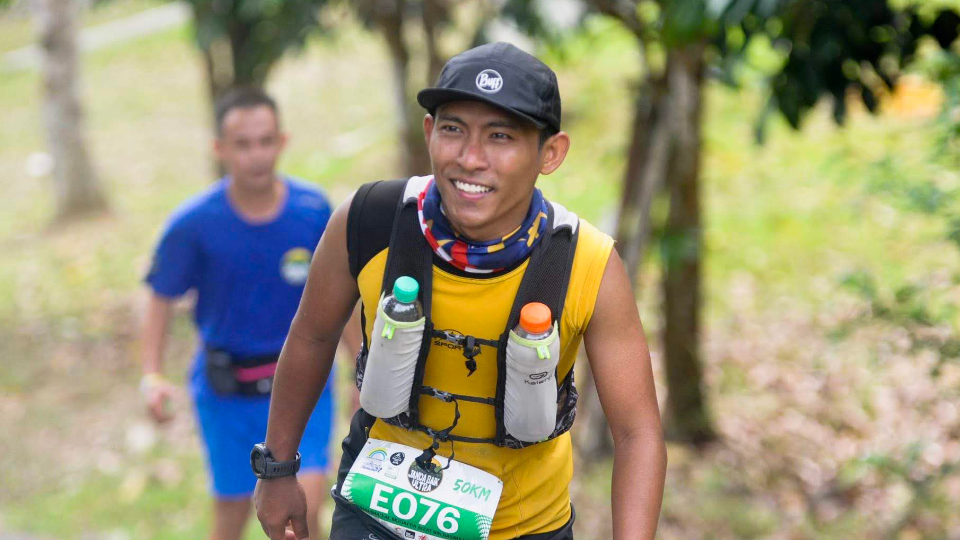
RS: What inspired you to do ultra trail running?
Amirisa: When I started trail race it was only 7km. But, I felt like something was calming me down during trail running. From there, my heart was racing to try an ultra trail race. I get to know many idols like Tahira from Malaysia and of course, the well known ultra trail runner, Killian Jornet from Spain.
RS: What is your main motivation for doing athletics as an ultra trail runner?
Amirisa: If I don’t try I won’t know where is my limit. Besides, throughout the race, I have a beautiful scenery to look at.
RS: Where do you usually train for your ultra trail races?
Amirisa: I will go to hike, mountain such as G7, Gunung Datok, Bukit Kutu, Gunung Rajah and many more mountains and trails in Malaysia. It can build my endurance, leg strength with the elevation and mileage.
RS: How do you plan and train for your ultra trail marathon?
Amirisa: Actually, I have a running team that we follow our planning and schedule. On weekdays, we will do a speed workout, hill training and long slow distance (LSD). On the weekend, we will find the trail, mountain or hills for our elevation training.
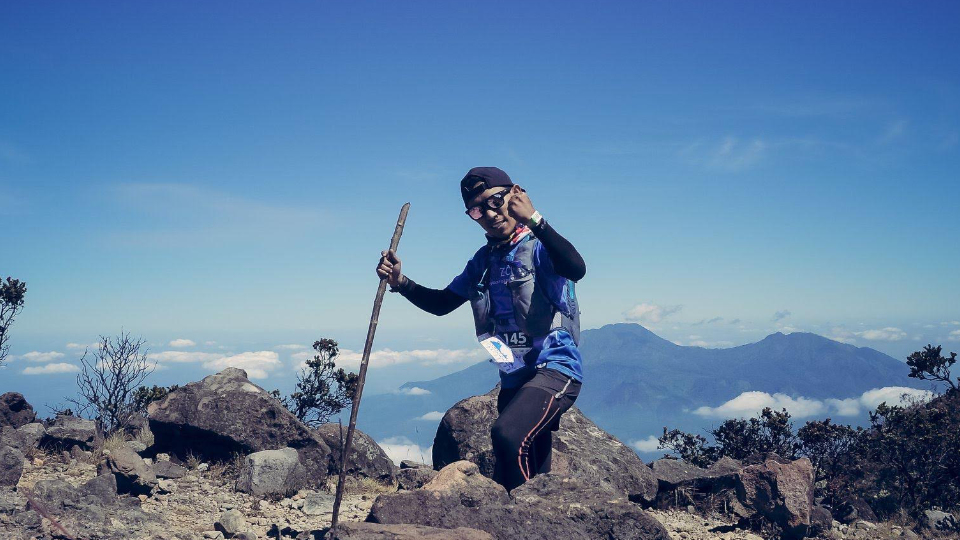
RS: Did you encounter any struggles during your training?
Amirisa: The struggle I mentioned every time was during training because nothing is fun during training. But I think this is just only the time I need to work on my preparation for an ultra trail racing.
RS: What was your most memorable trail race experience?
Amirisa: The first time I entered an ultra trail race, was the ultra marathon run in Indonesia. For the first time my hands suffered frostbite during the race. I almost cried at that time until when I returned to the forest area. The feeling when I passed the finishing line with supporters from my friends were overwhelmed.
RS: What do you think is the key to become a successful ultra trail runner?
Amirisa: Always be humble and look for knowledge, even when we succeeded. Most importantly, do not underestimate the elevation given in the race. Training harder, gain larger.
RS: What are the tips and tricks to improve in ultra trail running?
Amirisa:
- Start with the time not the distance.
- Run the elevation not the time.
- When going up the uphill, do not look up because it will make us mentally tired.
- During downhill, try not to hold our knees down to avoid knee injuries. It’s challenging to master, so we need to train for it.
- Run in a group is more efficient and improve faster than running alone.
You can follow Amirisa on Instagram: @theamirisa
6. Yong Chee Keat
Bio: 39 year-old, Architect
Yong Chee Keat started running around 2012, in the distance of 5km and 10km. He went to his first full marathon in 2013. Chee Keat is not a sporty person since young and never was an active person due to work and overtime. Until he started running and make friends in the running community, he has been active ever since.
I just enjoy the race for my experience and meeting great friends along the way. Most importantly, I enjoy every moment during my training and races.

RS: How did you get involved in ultra trail running?
Chee Keat: Compare to road run, trails are more connected to the nature and often, I smelled the fresh air. Sometimes, we will slow down during our trail running to enjoy the nature, the water and the fresh air.
RS: What is your main motivation for trail running?
Chee Keat: Ultra trails equals to 50km and above, which means we will have to spend 18hrs and above inside the jungle trails, day and night. It can test our limits and our mental. Also, we get to see beautiful scenic places, the sunrise from a mountain top, and the night view too.
RS: Where are your usual go-to places for ultra trail training?
Chee Keat: To me, anywhere is a training place. For example, parks, staircases and stadium. I also do need to train for all aspects including basics running, drills, core, strength, long run and etc. Some places that I like going nearby will be Kiara park, Bukit Gasing, Apek Hill, Batu Caves and Gunung Nuang.
RS: How do you plan and train for your ultra trail marathon?
Chee Keat: Normally I don’t train for a specific race, I train constantly every week. For instance:
- Monday – 10km slow run + core/strength training
- Tuesday – Interval/ speed training
- Wednesday – Tempo 5km + 5km
- Thursday – Hills
- Friday – Rest
- Saturday – Trails
- Sunday – LSD 20/30km
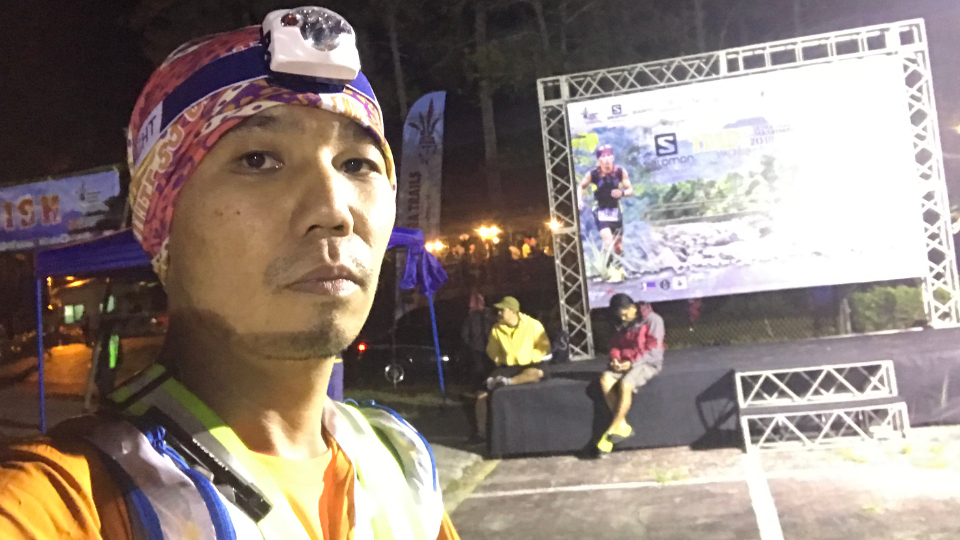
RS: Has there been any struggles during your training?
Chee Keat: I do have lazy days after some big races, I will take rest for 1 or 2 days before I resume to my normal schedule. The schedule is important to keep track of your training routine, so that you will not over train. Improve slowly and building up the basic is important too.
RS: What was your most memorable trail race experience throughout your running journey?
Chee Keat: Every race is unique and memorable. My longest 100km was TMBT. Sabah is a very good experience. We run alongside with the great mountain view of Mt. Kinabalu. The friendly local people along the route, the cold night at 2000+ height. This experience that money can’t buy.
RS: What is the key to become a successful ultra trail runner?
Chee Keat: I am not sure how you define successful. I don’t get any prize or not even a podium runner. Mostly, I just enjoy the race for experience and meeting great friends along the way.
RS: Do you have any tips and tricks to be better in ultra trail running?
Chee Keat: I am not a fast runner, going consistent maybe faster in a way. I would say train for the basic, build a stronger core. Lastly, enjoy every moment.
You can follow Chee Keat on Instagram: @yong.keatarkeat
7. Bernardine Chin
Bio: 59 year-old, Self-employed. Solo Run Ambassador
Bernardine is self-employed as she supply vegan food, traditionally handmade Chinese cuisine bun, dumplings for festival season. She is also one of the official Solo Run ambassadors to promote running as a healthy lifestyle.
It is important to be mentally ready, so you know what to expect of yourself. Solve the problems one step at a time.
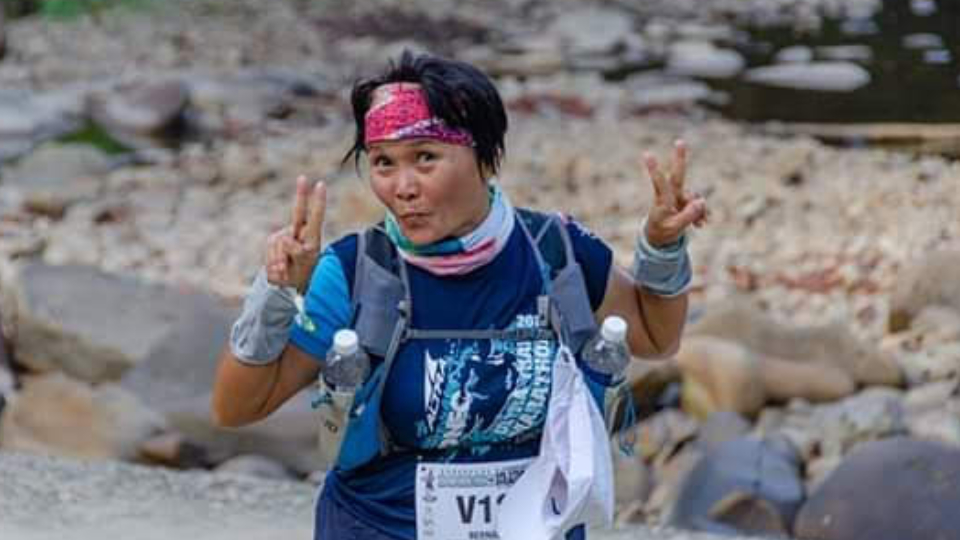
RS: Why did you start ultra trail running?
Bernardine: I saw my friends and family shared their amazing stories from their runs. This inspired me greatly. Doing ultra trails pushes my boundaries to where I never knew I could.
RS: What is your main motivation for doing athletics as an ultra trail runner?
Bernardine: To explore my limits in my body. Also, to achieve what is seemingly impossible at first.
RS: Do you have any go-to places for ultra trail training?
Bernardine: Those days, if I want to go for a tough trail, I like to go Nuang Peak as it offers generous, tough trail and high elevation, since it closed down, I will go to Bukit Kutu. Bukit Kutu it offers more that 1000+ elevation steep. If daily regular consistent training I will just go to Sri Bintang as it is near my house, the elevation is just 200+, so just train on hills to hills and repeat the plan. It’s enough to keep the training moving.
RS: How do you plan and train for your ultra trail marathon?
Bernardine: I spend lots of hours and miles conditioning my body to the stresses of running an ultra trail. That means more than 10 km every day and long runs over the weekend. I also do observe my nutrition preparations as that can be critical.
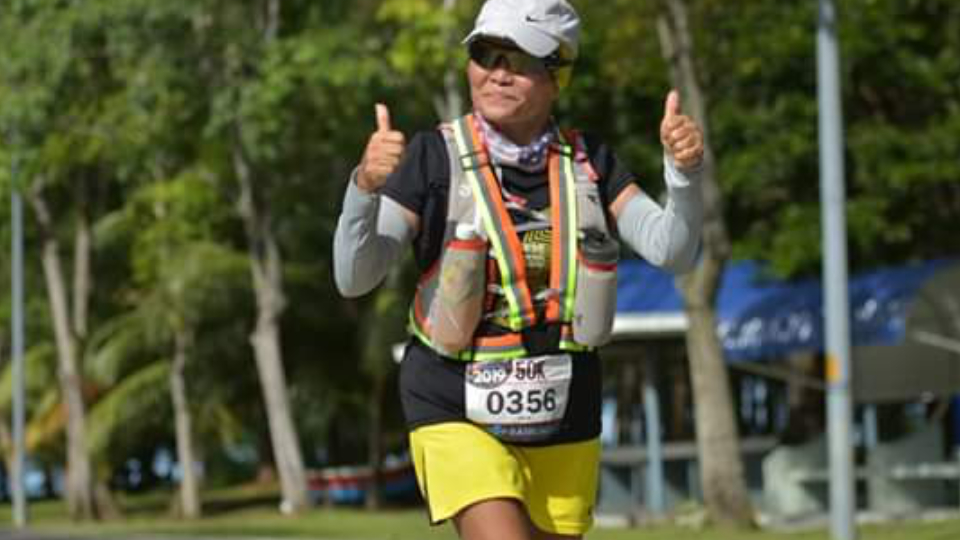
RS: Did you encounter any struggles during your training?
Bernardine: Ultra trail running is not easy. So, for sure there are struggles; some during training and some during the race. It is important to be mentally ready, so you know what to expect of yourself. Subsequently, any problems can be overcome one step at a time.
RS: What was your most memorable trail race experience throughout your ultra trail journey?
Bernardine: In 2017, I went for BUTM (Borneo Ultra Trails Malaysia) the oldest ultra trail in Malaysia. It is the toughest trail in Malaysia. I told myself I need to break through 100km Trail Ultra to challenge my ability, to see how far I can get through. My most traumatic concerned was running in the dark alone. It was scaring. But I stood strong and overcame all the issues. Thanks to Faktuh Ramboo, one of the strongest ultra trail runners I know. He gave me lots of advices and tips, I survived with the 33 hours of this race.
RS: What is the key to become a successful ultra trail runner?
Bernardine: I feel it has to do with physical conditioning, nutrition planning and also mental preparations. Everything else is secondary.
RS: What are your tips and tricks to improve in ultra trail running?
Bernardine: For sure one needs to put in the hours to get the results you wanted. The harder you train, the easier the race will be. Start small and gradually extend your challenges. Always be prepared for things to not go as planned, (because they usually don’t) and understand that a DNF is not the end of the world.
You can follow Bernardine on Instagram: @bernardinechin
8. Arman Arshad
Bio: 41 year-old, IT Engineer
A father of 5, Arman Arshad is the event organiser and a runner. Arman Arshad love outdoor, hiking and running. Currently, he is attached with Team Pacat and Team The Comrades, 2 active organisers for ultra-marathon and below 50KM event in Malaysia.
Train, train, train. There is no shortcut to become a successful ultra trail runner.
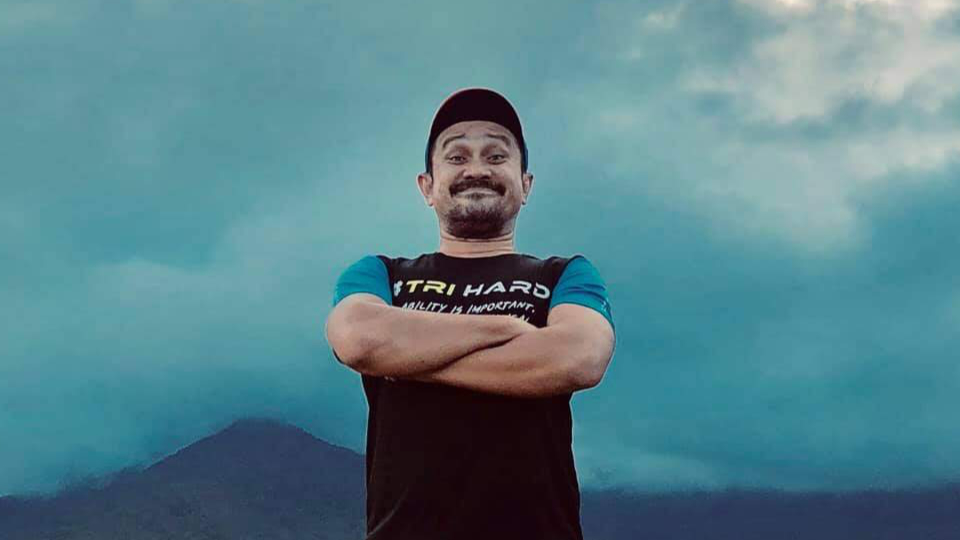
RS: Why do you like ultra-trail running?
Arman: I just love to go outdoors. From hiking to running. Love to see nature. Sometimes, when I feel sick, I just grab my sandals and go for a long run or hike. It’s a remedy for our soul. If you ask who inspired me, I will say Uncle Yim Heng Fatt, from fat to fit. Last time, I had the exact same issue. But my weight issue had solved because ultra trail running bring me into another dimension.
RS: What is your main motivation for doing athletics as an ultra-trail runner?
Arman: Challenges. I love trouble and challenges. Each game will give different type of satisfaction. Each game will push us to train hard in many ways. Example, if we want to go for total trail games, it requires more effort than run at the park. More time, more comprehensive training plan and more pain.
RS: Where are your go-to places for ultra-trail training? Why?
Arman: I usually train in Broga Hills. I love the package, 5 rolling hills with 400-meter (+-) and 4KM return (+-). If I do 5 loops, I will get 20KM (+-) with close to 2000 meter elevation gain (+-). Besides, some part is technical, it also gives me extra heat. The place is open space and hot after 9 a.m. “Run till you see the stars.” some say.
RS: How do you plan and train for your ultra-trail marathon?
Arman: For the big game, I will train at least 3 to 5 months for training. Big games mean total trail or game with killing elevation. I will put more effort in the gym for strength training at least 3 times a week for 1 hour each session. 30 minutes of easy running or walk daily. 2 months before the game, I will put minimum 2 session for the long run.
Usually, I will work more on hardcore hiking trips like V1 or V2 trip in Trans Titiwangsa. If I am busy, I will do my long run at Broga Hills, 10 loops, repeat back-to-back in 2 to 3 days. I have simple hydration and game plan as I stick with minimalist format.
Eat dried banana, lepat pisang (local kuih), plain water, and wear sandals to minimise the problems.
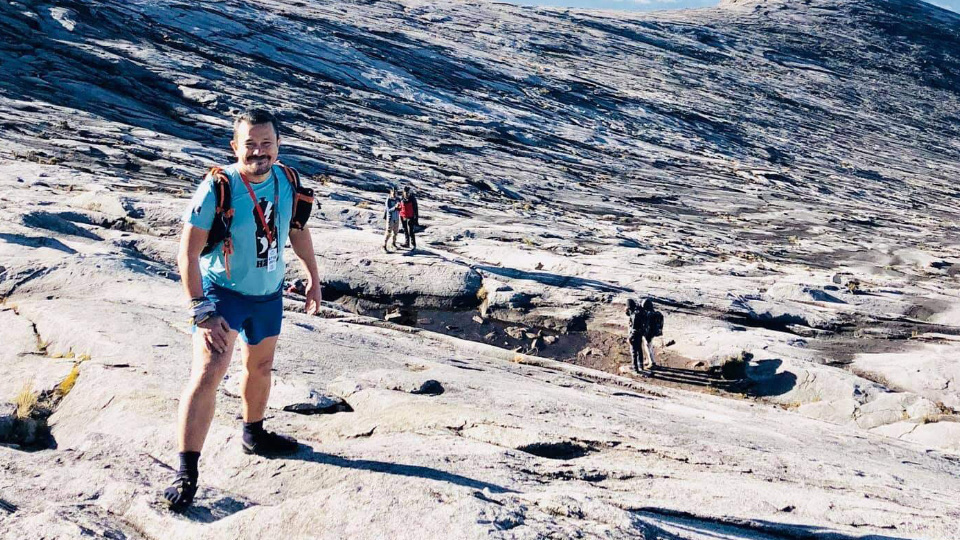
RS: Did you encounter any struggles during your training?
Arman: Yes, there are. When I am busy with my office work. Sometimes, cortisol level will be going too high and it will kill our mood and motivation. I will take a break and sleep and eat more for maximum 3 days. Listen to your body. In this case, I will do a light activity like swimming, walk, cycling.
RS: What was your most memorable trail race experience?
Arman: Doing back-to-back to Ultra Trail Hong Kong (UTHK) and TransLantau few years back. It’s just a few weeks apart between both events. If I got injured, I can’t proceed to the next game. Worse, it was in Hong Kong and I need to make sure I can walk back to the airport. Both games give me total great experience.
UTHK, popular with total independent games. No marker, we need to do everything ourself at the aid station. Minimum support in almost all aid stations. I lost track a few times and got worse, it was mountainous and stairs everywhere. Once you lost you need to back track up the mountain.
TransLantau, there was a typhoon happened when I was at last 20KM before finishing line. The game has been cancelled. Best part, I was in the typhoon when organiser call off the games. When I reached Checkpoint 9 (the last check point before finishing line) no one there. I called my wife and she told me the game cancelled due to typhoon. So, I walked 1km to the main road and take the bus to the finishing line.
RS: What is the key to become a successful ultra-trail runner?
Arman: Train, train, train. There is no shortcut.
RS: What are your the tips and tricks to improve in ultra-trail running?
Arman: I believe everybody has their own way to manage themselves in every game. I have a few things that I always do and it helps me to survive.
- Don’t skip strength training. I love to add wall squad, Burpee and lunges in each session. Put it with maximum effort and not as easy as you can handle it. Trust me, when you see hills or mountain you will say. Whack it!
- I use to take simple food in my training and games. Dried banana (Pisang Salai) and Lepat Pisang (local kuih). It makes me full and easy to take. For some long games, I will bring rice with sambal ikan bilis. Yes, it makes me full and awake along the run.
- A lot of caffeine. This will help me to awake too.
- Get the right people for advice. I can see so many people stuck with the wrong way of doing it. Don’t get trapped into #DNFUnion. Once you feel so much comfortable not finish the race, you will keep doing it without feeling anything.
- Master the run walk method. Yes, this is crucial. Google about it.
You can follow Arman on Instagram: @papai_olive
9. Faherina Bt Mohd Esa
Bio: 37 year-old, Private Sector Employee
Faherina aka Ryna or Rynz is currently working in the private sector. Ryna love sports. Others than sport, she also loves to travel and do mountaineering with her girlfriends. Ryna is actively involved in sports since 2011 from mountaineering, cycling, diving and etc. Ryna love multi sport and challenge herself to every level.
Your mind is stronger than your body, but do respect your limits.
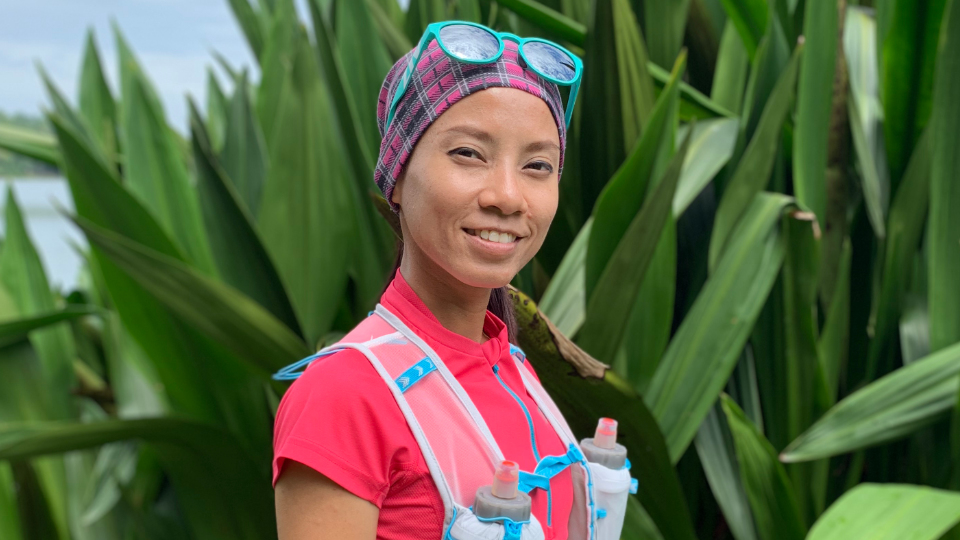
RS: What inspired you to start ultra trail running?
Ryna: I love to challenge myself, I start from hiking, short distances run, cycling and adventure race. The thing that inspired me to do an ultra trail running is endurance and challenge, the level of tougher that push my limit to go further.
RS: What is your main motivation for doing athletics as an ultra trail runner?
Ryna: My main motivation is my mother. She always supports and understanding that I spent my weekend for training and event. Normally, if I give up on the event, I will remember her and push to the finishing line. And after the event, she will ask me which placing I got. If I am at home resting, she will ask me “Is there any training for today?”. The best part is, when my wrist broken (2nd time) at the Mt Korbu for Rinjani100 training, she will not be angry at me. She will support and help me during my recovery period. I love her very much.
RS: Where are favourite places for ultra trail training?
Ryna: Mt Nuang – I love to train at Mt Nuang because before I run, I always hike at Mt Nuang. Mt Nuang is good for endurance training because they have all types of terrains and is technical, which can improve a lot of skills for trail runners. Other than that, the view of the peak also is superb and peaceful.
RS: How do you plan and train for your ultra trail marathon?
Ryna: Normally, I go for basic plan to avoid injuries in the future. For instance, I will go for a workout or gym to build up my muscle, especially for uphills and downhills. If there is no event during the weekend, I will do long runs. And weekdays, I will include a workout and short run in my plan. I don’t run every day as I have my career and I always ensure to sleep for 6 to 8 hours daily.
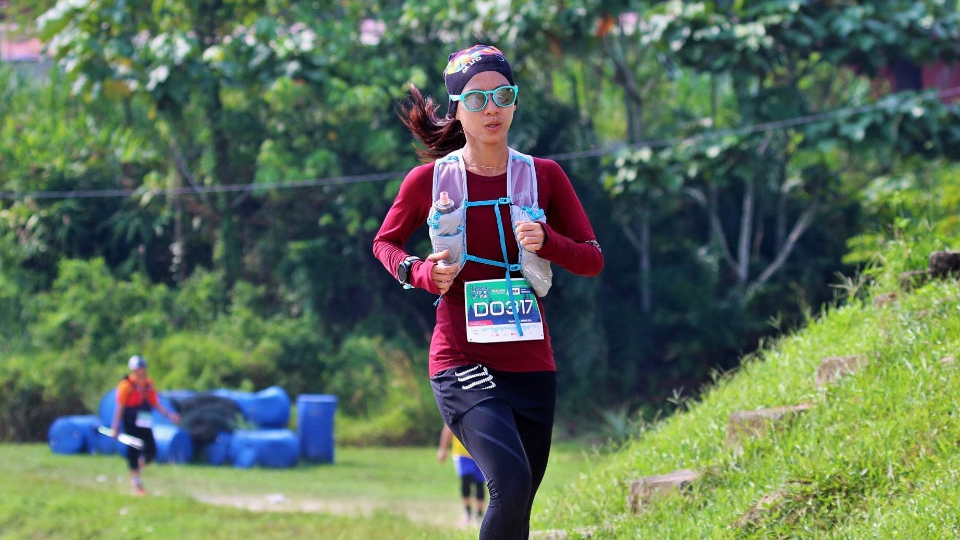
RS: Did you encounter any struggles during your training?
Ryna: Yes, especially now. I just recovered from ankle sprained (ATFL tear 8mm), I try to avoid surgery, therefore I have to rest for 6 weeks and zero contact with the sport. Then to get back on track, definitely it will be difficult. Breathing, movement, muscle to run all back to zero. I am unmotivated and down, but what I need to do is to think positive.
Life is like a wheel, sometimes we are at the top and sometimes we are not. So, I just follow the flow and listen my doctor’s advice to start slowly and always think positive. And yes, I managed to complete my 100km UD SG Ultra-marathon at my week 7 which I just have accumulated 28km training after 6 weeks of rest for this event. All I can say is, mentally. Not just body and physical to train, but mental is important to train. Your mind is stronger than you body, but do respect your limits.
RS: What was your most memorable trail race experience?
Ryna: TransLantau 100Km, I have been running at Indonesia, but the most memorable will be Hong Kong, which is at the Lantau Peak. That day the wind was strong, all runners struggled to climb to the Lantau Peak.
We need to move in a group as the wind is too strong and I try to follow other runner’s pace to ensure that I can reach the peak safely. It was fogging as well, even though I have the headlamp, I still cannot see at the front and back as it is too hard to focus.
So, what I did was to follow the front runner step. But at the end, the event called off due to the strong wind. This makes me to be alert and move in groups.
RS: What is the key to become a successful ultra trail runner?
Ryna: Training, rest, get enough sleep, nutrition and always go train the basic.
RS: What are your tips and tricks to improve in ultra trail running?
Ryna: Here are my tips and tricks:
- Step by step.
- Hiking or stair.
- Trust your own preparations.
- Follow your own pace.
- Keep fuel up your body and keep hydrated.
- Be prepared to spend a lot of time alone.
- The tough time will pass and last, enjoy yourself.
Yu can follow Faherina on Instagram: @ryna09
10. Yap Lay Yong, Rebecca
Bio: 34 year-old, Pricing Analyst
Rebecca is a corporate lady who loves running and hiking.
Mindset and physical are equivalent important in order to be a successful runner.
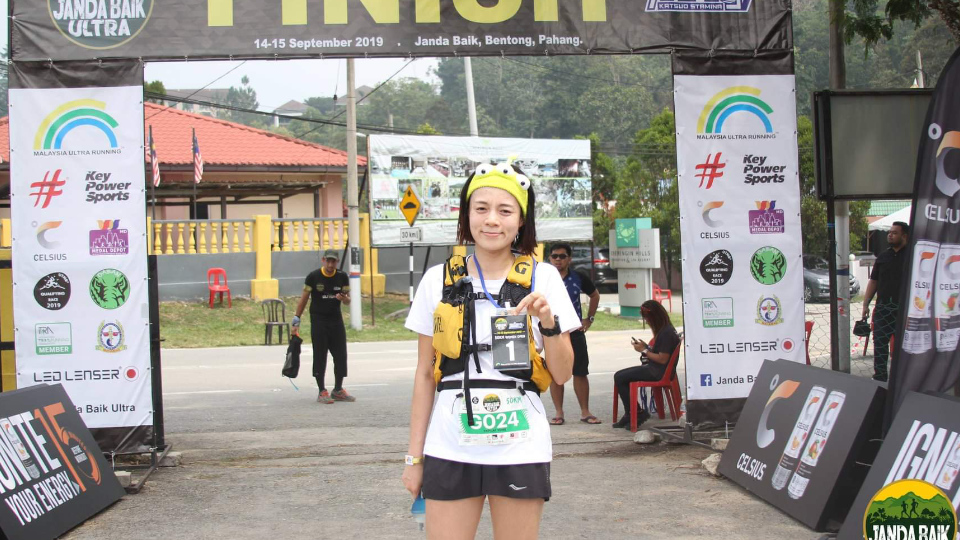
RS: What inspired you to start ultra trail running?
Rebecca: My team (MALAOTEAM). They are a bunch of young dudes who are enthusiastic about running and hiking. I somehow got influenced by them. Prior to this, I don’t even know what ultra marathon is, they are the ones that introduced me to this game.
RS: What is your main motivation for doing athletics as an ultra trail runner?
Rebecca: I think it’s kind of challenging to take part as an ultra trail runner. I like to challenge myself not only physical but mental as well. I guess this is the main motivation that keeps me moving. Besides, I also love staying in the woods and that’s why I am more into trail running instead of road running.
RS: Where do you train for your ultra trail runs?
Rebecca: Jerantut because it’s my hometown with mountains surrounding. Sometimes I can get to see the sea of clouds when I was training on the mountain. Try google, Bukit Seladang Jerantut, you will get a picture of it. It’s a beautiful small town which located in Pahang. Training plus nice scenery, it is perfect.
Besides, I also do training at Bukit Gasing, PJ with my friends. We have this weekly hiking session at Bukit Gasing. It’s a good training ground whereby you get to experience many different types of terrains over there (eg: tarmac, jungle, staircases, rope climbing). Usually we will start training at 6:30pm, the sky turns dark around 7pm and that’s when we get to hike in the dark with a headlamp on.
At the same time, we also get to adapt ourselves running in the dark, overall, it’s a good training though. Gunung Nuang is a good training place as well. You will get to see squirrels at the mountain top, waterfalls.
RS: How do you plan and train for your ultra trail marathon?
Rebecca: This is how I plan:
- Weekdays : Road running 10k – twice a week.
- Weekdays : Trail running/hiking 5k-6k – twice a week.
- Weekend : LSD on Sunday or longer hiking session on Sunday.
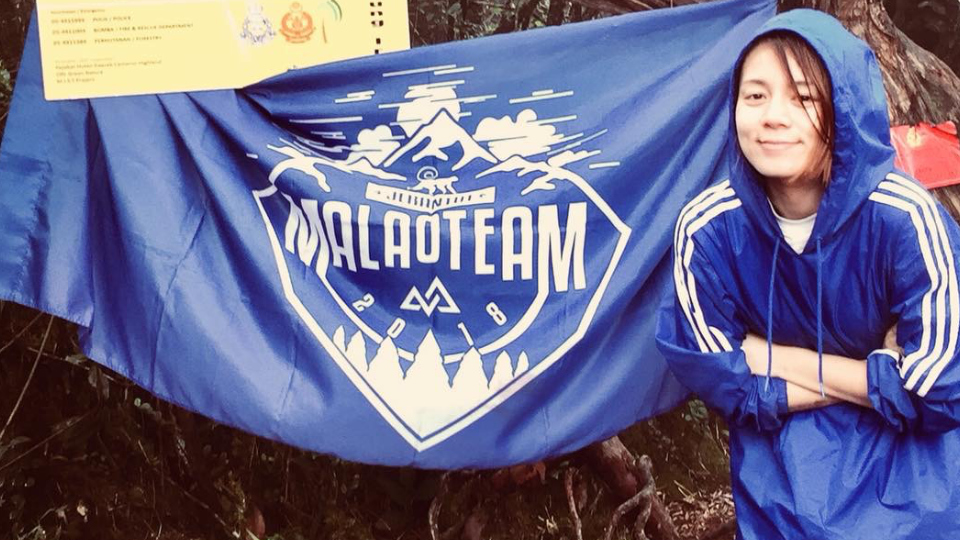
RS: Did you encounter any struggles during your training?
Rebecca: Yes, both my legs were badly injured when I just started running last year. Reason being I was too harsh with myself during that time. Later on I learn to listen to my body and tell myself that it’s ok to run slowly, train step by step, get enough rest, recovery time and nutrition for myself.
RS: What was your most memorable trail race experience throughout your running journey?
Rebecca: TGMT 2019 which happened last month. It was raining during the race, the trail was extremely slippery, I sat on the muddy trail and slide down while going downhill. It was fun!
RS: What is the key to become a successful ultra trail runner?
Rebecca: I don’t know how to answer this question and I don’t think I am in the best position to answer this question. I never think that I am a successful ultra trail runner, rather to say I was lucky in my past races.
There are many successful runners out there and I am just a little potato who is still learning to run. I think the mindset and physical are equivalent important in order to be a successful runner. If you have a strong mindset, but you do not have the strong muscles, tendons and joints, you can’t perform.
RS: What are your tips and tricks to improve in ultra trail running?
Rebecca: These are the tips and tricks:
- Train, eat and rest enough. Go to the gym, no junk food, minimise processed food intake, eat natural food with high protein source.
- Discipline, consistency and jumping out of the comfort zone. Nothing comes easy without hard work.
- Do things that you love, you will definitely find ways to improve yourself, listen to your body, don’t rush in getting results, when you put effort into running, you will definitely outshine eventually.
- Find time to consult elite runners or read books/articles regarding ultra running, nutrition that needed for running, training plan, ways to run fast, tips for running long distance, and etc.
You can follow Rebecca on Instagram: @rebeccayly
Only those who will risk going too far can possibly find out how far one can go.
Start Trail Running Today
Is trail running harder than road running?
Trail running require more endurance that road running. Road running is more fast paced with little or no obstacles usually on a flat surface which trail running usually require a runner to go through different running terrain and altitude.
How do I start trail running?
You can start your first trail running:
1) Find the right trail running shoes
2) Equip your running gear
3) Find your trail
4) Work on your trail running techniques
5) Start running and enjoy your time with nature
Does trail running make you slower?
The trail running pace is generally slower compared to road running as you can expect your pace per mile to drop anywhere from 30 seconds to 90 seconds while trail running. However, speed is generally not the most important factor in a trail race but rather than endurance, stamina and strength.
Is trail running better?
Trail running has several benefits compared to road running. Trail running is also less stressful for your knees and challenges your coordination, agility and balance. Trail running also strengthen the legs to a greater degree than road running. Additionally, trail running is a “green” outdoor exercise that can improve your mental health, cognitive and emotional Health and also make you more creative.
After soaking in with all these valuable advices from our amazing trail runners, are you up for an ultra trail run next?



